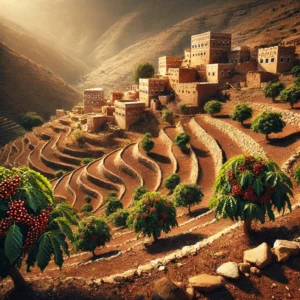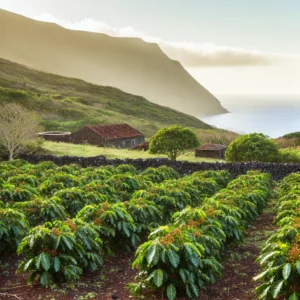Coffee, often regarded as a simple beverage, is a complex world unto itself. Each cup holds a story, a journey from bean to brew that encompasses a rich tapestry of culture, geography, and meticulous craftsmanship. In this article, we delve into the fascinating world of coffee beans, exploring their unique profiles and the stories they tell.
The Journey Begins: Understanding Coffee Profiles
Coffee profiles are essentially the distinct characteristics that define the flavor, aroma, and overall experience of a coffee. These profiles are shaped by a myriad of factors, including the bean’s origin, altitude, processing method, and roast level. Understanding these elements allows coffee enthusiasts to appreciate the diversity and complexity of coffee in a more profound way.
Origin: The Soul of the Bean
The origin of a coffee bean plays a pivotal role in defining its profile. Coffee is grown in various regions around the world, each with its unique climate, soil, and altitude. These environmental factors contribute to the distinct characteristics of the beans.
Ethiopian Coffee: The Birthplace of Coffee
Ethiopia is often referred to as the birthplace of coffee, and for good reason. Ethiopian coffee is renowned for its bright acidity, floral and fruity notes, and a delicate, tea-like body. The country’s diverse microclimates produce beans with unique flavors, ranging from the jasmine and bergamot notes of Yirgacheffe to the wine-like richness of Sidamo. Each region within Ethiopia offers a different coffee experience, reflecting the country’s deep-rooted coffee culture.
Colombian Coffee: A Perfect Balance
Colombia, with its ideal coffee-growing conditions, produces some of the world’s most beloved coffee beans. Colombian coffee is celebrated for its balanced flavor profile, featuring a harmonious blend of sweetness, acidity, and a medium to full body. The beans often exhibit notes of caramel, chocolate, and citrus, making them a favorite among coffee aficionados.
Altitude: The Higher, the Better
Altitude is another crucial factor influencing coffee profiles. Generally, higher altitudes result in beans with greater density and complexity. The cooler temperatures at higher elevations slow down the maturation process, allowing the beans to develop more nuanced flavors.
Guatemalan Coffee: Rich and Vibrant
Guatemala’s high-altitude regions, such as Antigua and Huehuetenango, produce exceptional coffee beans. Guatemalan coffee is known for its rich, full-bodied flavor with bright acidity and intricate flavor notes. Depending on the region, you might encounter hints of chocolate, toffee, and tropical fruits. The combination of volcanic soil and high elevation creates beans with a distinctive and vibrant profile.
Processing Methods: Crafting the Final Flavor
The way coffee beans are processed after harvest significantly impacts their final flavor. There are several processing methods, each imparting different characteristics to the beans.
Washed Process: Clean and Crisp
In the washed process, the coffee cherries are pulped, and the beans are fermented to remove the mucilage before being washed and dried. This method tends to produce a cleaner and brighter flavor profile, allowing the inherent qualities of the bean to shine. Ethiopian and Kenyan coffees often undergo washed processing, resulting in their characteristic acidity and vibrant flavors.
Natural Process: Fruity and Bold
In the natural process, the coffee cherries are dried with the fruit still intact, allowing the beans to absorb flavors from the surrounding fruit. This method often produces beans with a fuller body and more intense fruity notes. Brazilian and Ethiopian coffees processed naturally are known for their bold and fruit-forward profiles.
Roasting: Bringing Out the Best
The roast level is the final step in defining a coffee’s profile. Roasting transforms the green coffee beans into the aromatic and flavorful beans we know and love. The roast level can significantly alter the bean’s flavor, aroma, and body.
Light Roast: Highlighting Origin Characteristics
Light roasts preserve the bean’s original flavors, highlighting the unique characteristics imparted by its origin and processing method. These roasts tend to have higher acidity, a lighter body, and more pronounced fruity and floral notes. Single-origin coffees are often roasted lightly to showcase their distinct profiles.
Dark Roast: Deep and Bold
Dark roasts, on the other hand, emphasize the roast characteristics, resulting in a deeper, more robust flavor profile. These beans typically have lower acidity, a fuller body, and notes of chocolate, caramel, and toasted nuts. While the origin flavors are more subdued, dark roasts offer a comforting and intense coffee experience.
Unique Coffee Profiles and Their Stories
Now that we have a better understanding of what shapes coffee profiles, let’s explore some unique beans and the stories they tell.
Jamaica Blue Mountain: The Epitome of Excellence
Jamaica Blue Mountain coffee is one of the most sought-after and expensive coffees in the world. Grown in the Blue Mountains of Jamaica at altitudes of 3,000 to 5,000 feet, these beans are renowned for their mild flavor, smooth body, and bright acidity. The unique climate, with its cool temperatures and frequent mist, creates beans with a delicate balance of sweet, floral, and nutty notes. Jamaica Blue Mountain coffee is a testament to the meticulous care and tradition of its growers, making each cup a luxurious experience.
Panamanian Geisha: A Sensory Revelation
Panamanian Geisha coffee has taken the specialty coffee world by storm. Originally from Ethiopia, the Geisha variety found a new home in Panama, where it developed a distinctive profile. Grown at high altitudes, Panamanian Geisha beans are celebrated for their complex and vibrant flavors, featuring jasmine, bergamot, tropical fruit, and a tea-like body. The meticulous cultivation and processing methods contribute to its extraordinary quality, earning it top honors in international coffee competitions.
Hawaiian Kona: A Tropical Treasure
Kona coffee, grown on the slopes of Mauna Loa in Hawaii, is a tropical delight. The unique combination of volcanic soil, high elevation, and ideal climate conditions results in beans with a smooth, rich flavor and a hint of sweetness. Kona coffee often exhibits notes of nuts, chocolate, and a subtle fruitiness, making it a beloved choice among coffee enthusiasts. The story of Kona coffee is deeply intertwined with Hawaii’s history and culture, adding to its allure and charm.
Ethiopian Harrar: Wild and Fruity
Ethiopian Harrar coffee is known for its wild and fruity profile. Grown in the Harrar region of Ethiopia, these naturally processed beans offer a full-bodied experience with intense blueberry, wine, and chocolate notes. The beans’ distinct flavors and aromas reflect the traditional and natural growing methods of the region, making each cup a journey through Ethiopia’s rich coffee heritage.
Conclusion: Savoring the Stories in Every Sip
Coffee is more than just a beverage; it’s a journey through diverse landscapes, cultures, and traditions. Each bean carries a unique story, shaped by its origin, altitude, processing, and roast. By exploring and appreciating these distinct profiles, we can deepen our connection to coffee and the people who cultivate it.
As you savor your next cup of coffee, take a moment to reflect on the journey it has taken from bean to brew. Appreciate the craftsmanship, the environmental influences, and the rich history that contribute to its unique profile. In doing so, you’ll discover that coffee truly is a beverage with identity, one that tells a story with every sip.


